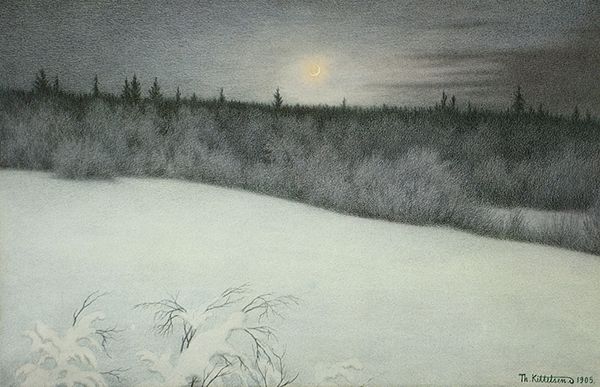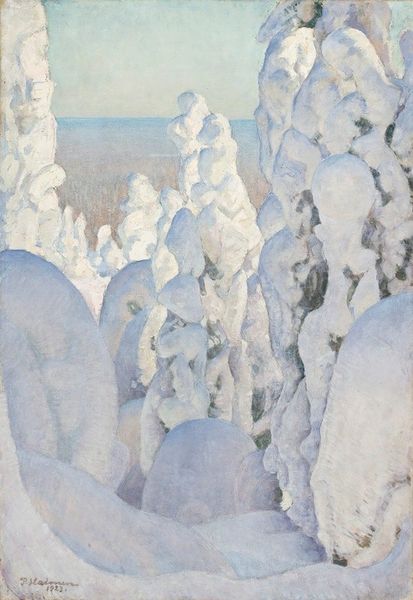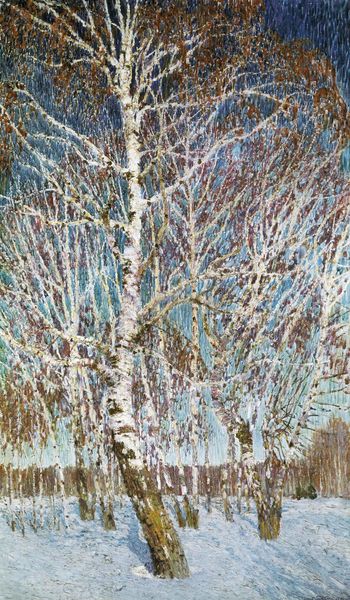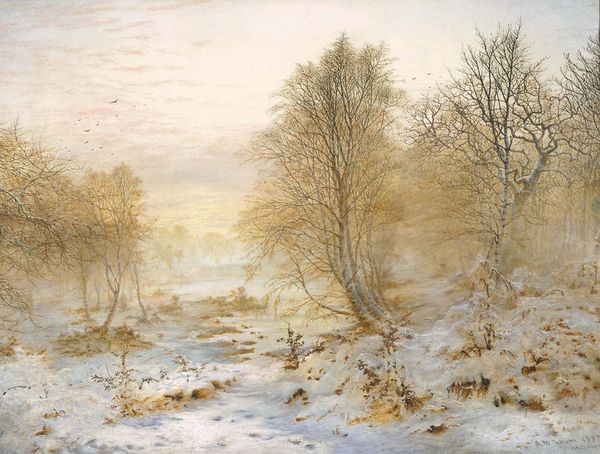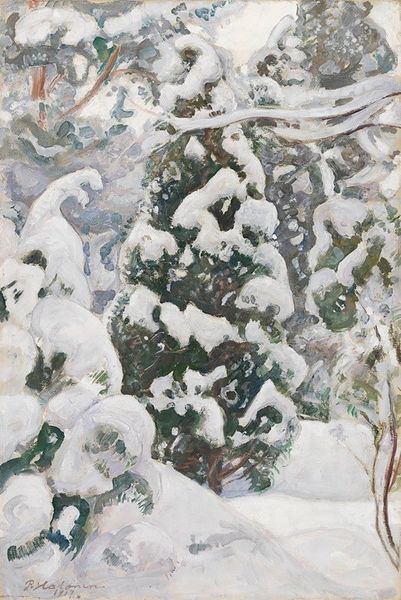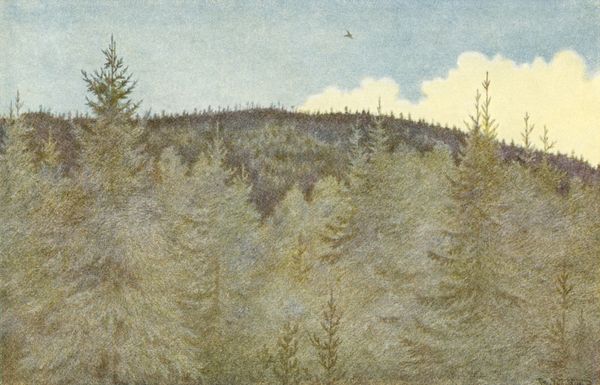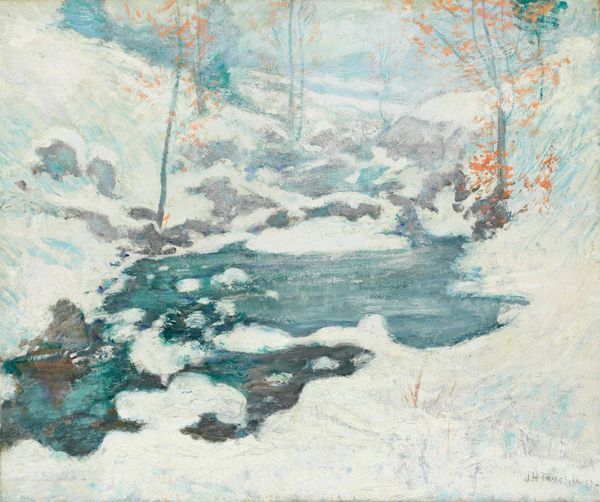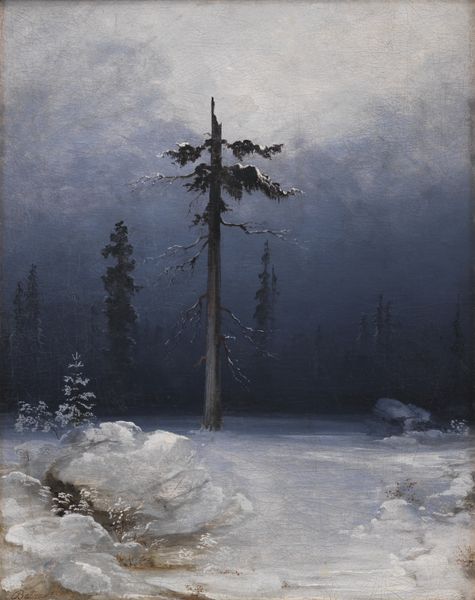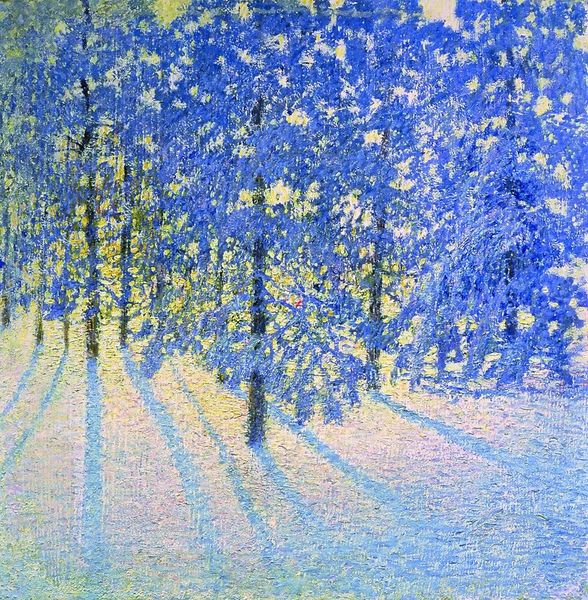
Dimensions: 56 1/8 × 58 1/2 in. (142.56 × 148.59 cm) (sight)
Copyright: No Copyright - United States
Editor: Here we have Gustaf Fjaestad's "Winter Landscape," created in 1908 using watercolor. I'm immediately struck by how the muted color palette and soft, blurred edges create a hazy, dreamlike quality. What visual elements stand out to you the most in this work? Curator: The prevailing tonality commands immediate attention. Fjaestad orchestrates a symphony of muted blues, greys, and yellows. Consider how the limited palette directs our focus to the interplay of texture and light. Notice the subtle gradations in the sky, achieved through delicate watercolor washes, juxtaposed with the denser application on the snow-laden trees. Do you perceive a spatial relationship established solely through these tonal variations? Editor: Yes, the lighter tones definitely seem to suggest distance, while the darker, more textured areas bring the trees forward. What about the composition itself? Is there anything significant about the placement of the trees or the horizon line? Curator: Observe the asymmetry of the composition. The dominant tree on the right acts as a visual anchor, contrasting the cluster of smaller trees towards the left. Furthermore, the artist employs the lines of the snow tracks to guide the viewer’s eye into the landscape. Could we then postulate, that the linear elements establish directionality within an otherwise static scene? Editor: That makes sense. It’s almost as if the tracks invite us into the painting. It is much more carefully designed than I initially thought. Curator: Indeed. A painting's formal elements communicate complex narratives when properly decoded. Editor: I see that now. Focusing on form has opened my eyes to how carefully constructed this seemingly simple landscape really is. Thanks for that!
Comments
minneapolisinstituteofart about 2 years ago
⋮
Gustaf Fjaestad made the Swedish winter landscape his hallmark. In hundreds of paintings, he explored the myriad effects of light upon snow. In Winter Landscape, Gustaf Fjaestad employs a personal form of Pointillism, using a pattern of dots and lines to create a snowscape of calm natural beauty. This painting is a large and important addition to the MIA’s collection of 19th and 20th century Nordic paintings, which has been steadily growing over the past five years.
Join the conversation
Join millions of artists and users on Artera today and experience the ultimate creative platform.
